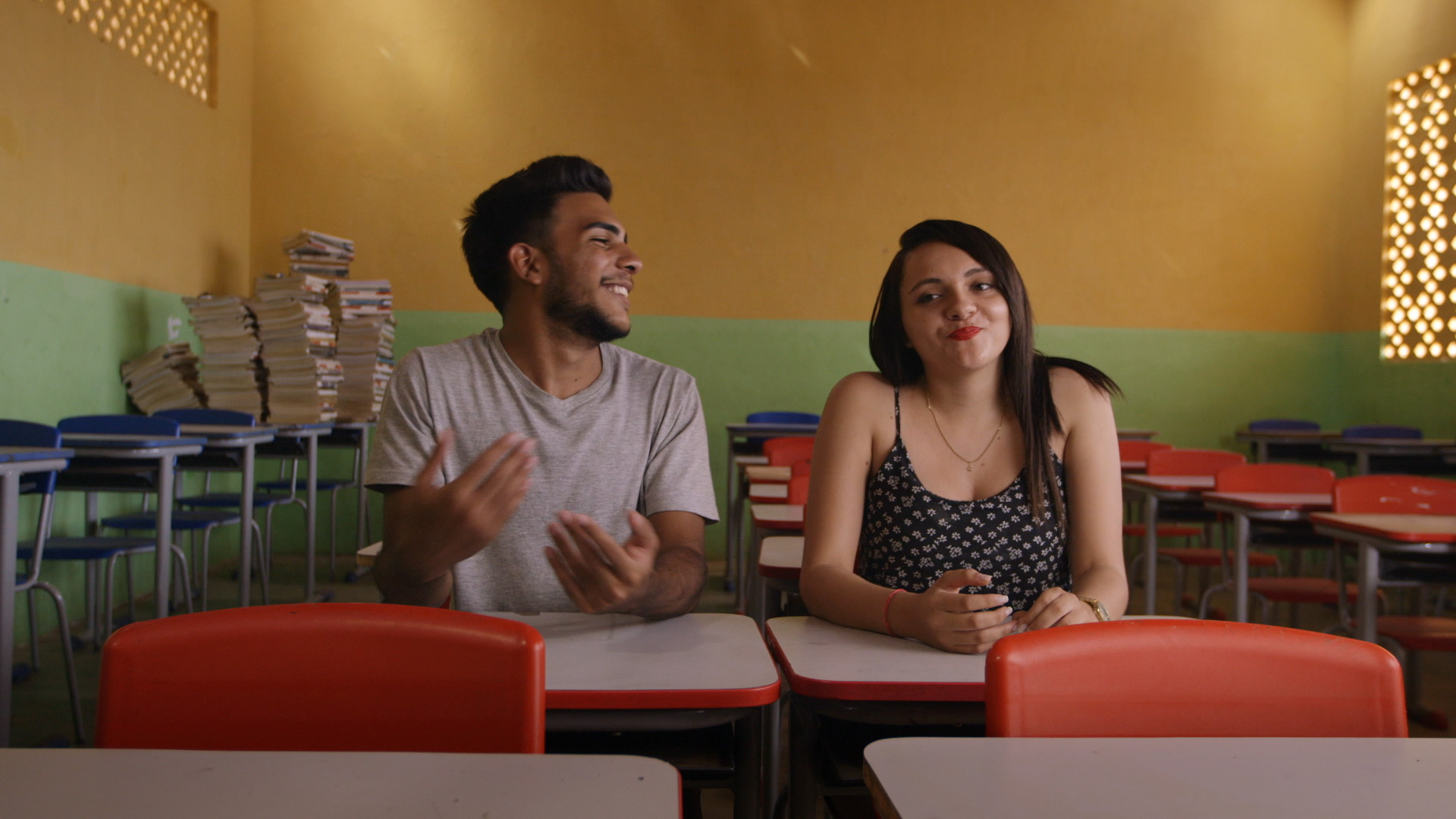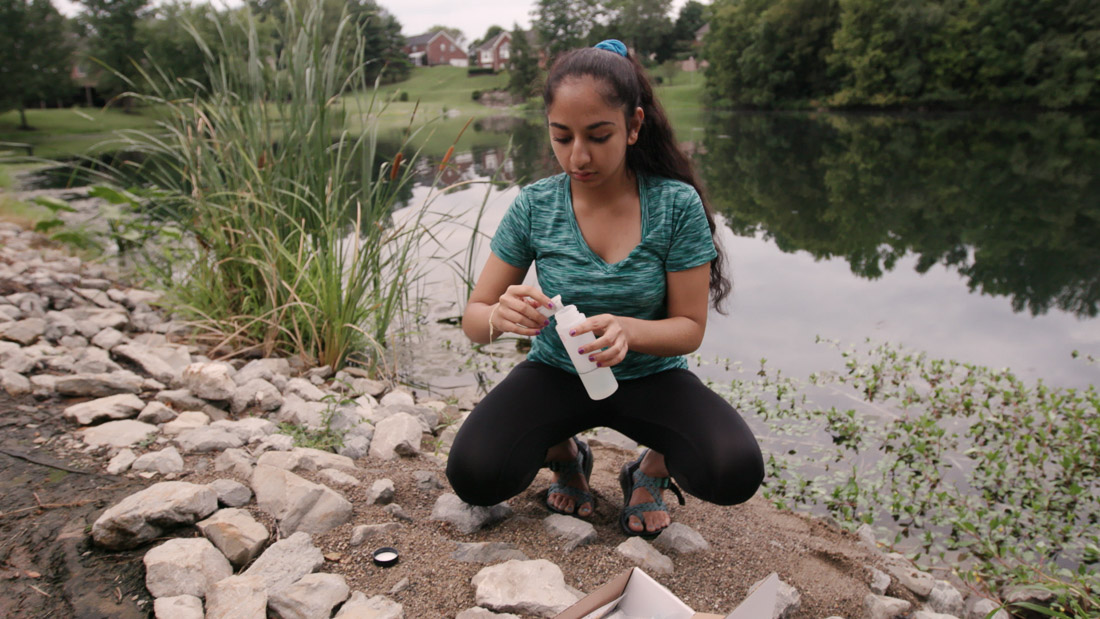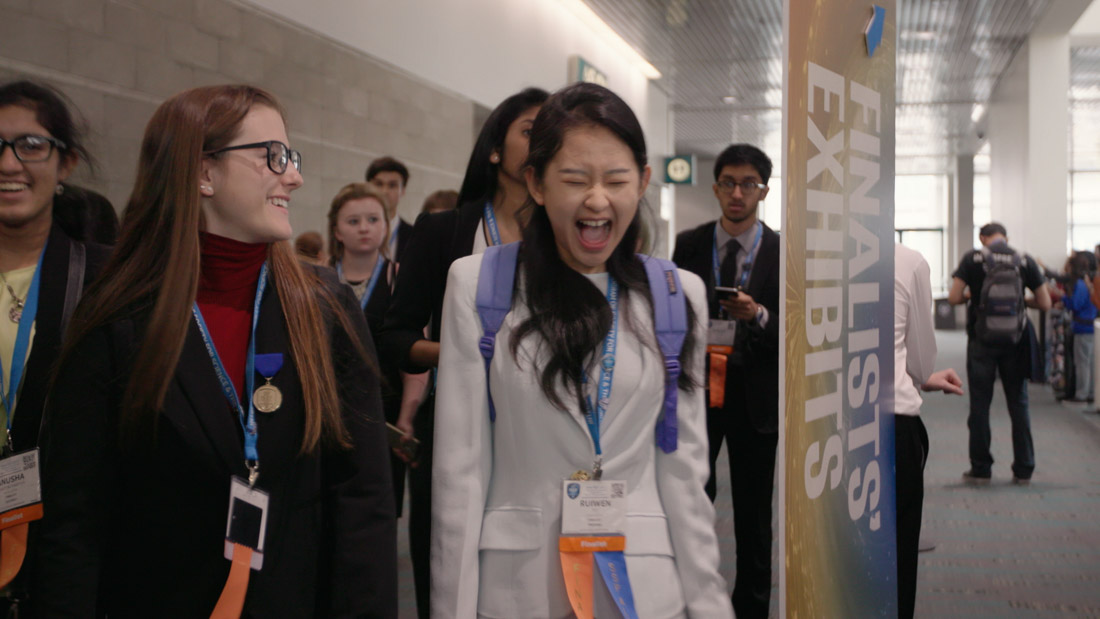Film festivals are not typically known to show movies that make you feel good about the world. Not that there’s anything wrong with dark dramas and sad documentaries, but after your 10th one in a row, maybe it’d be nice to find something upbeat to watch. You often feel the need to watch a movie that doesn’t bring you or its subjects down. And maybe it’s a film that makes you feel just a bit more inspired to take on the future.
Cristina Costantini and Darren Foster’s documentary Science Fair was one of those rare breaths of fresh air at the Sundance Film Festival that didn’t bring you altitude sickness. Their Fusion-produced movie follows a group of kids from across the country and around the world as they convene for the International High School Science Fair with projects about life-saving water filtration and even cancer research. Prepared to be very impressed and moved by these kids’ determination to solve the world’s problems. In fact, the film took home Sundance’s first-ever Festival Favorite Award, an honor bestowed after counting all the audience ballots distributed throughout the fest.
We spoke with Costantini, an award-winning Latina journalist for Fusion, about her feature-length project, how they found such smart kids to follow, and about her own background in the science fair community.
UPDATE 9/26/2018: Science Fair is currently playing in New York and Los Angeles and opens in additional theaters across the country on September 28, 2018.
Tell us a bit about Science Fair.
Cristina Costantini: “Sure! Science Fair is the story of nine teenagers as they qualify and compete at the International High School Science Fair, which is basically like the Olympics of science fairs. It’s the biggest deal that you can imagine.”
How old are these teenagers?
Costantini: “They’re all high schoolers, so like 14-18. I’m an investigative journalist; my background’s in investigative journalism. Very sad stuff, I mean detention centers, prison, immigration centers, just the saddest…really sad, important stories. I needed a break, and I was a high school science fair nerd myself and for two years I competed at the International Science and Engineering Fair and for me it totally changed my life, totally changed the whole trajectory of where I was headed, and got me into a good college, and that, in turn, affected the rest of my life and allowed me to become a journalist. So much has changed because of this one moment that was the International High School Science Fair. And so, for me, this is very much a love letter to this little world and I think right now, more than ever, telling the stories of these inspiring little kids, teenagers, who are going to change the world. In many ways [it’s] a dark time for minorities and women.”
Just to clarify, how did it change your life?
Costantini: “I think most importantly it was a validation that my interests were, that my mind and interests were important. It gave me confidence and taught me that I could do things basically. It validated me. I placed fourth in my category as a 14-year-old and it totally changed how I thought about myself, I think that was the most important thing. It gave me presentation skills; it was my first time away from my parents. I grew up a lot because of the fair and a lot of the skills I learned there I use still, like presentation, selling your project. There’s a lot of overlap between the process of learning how to do a science fair project and doing film. It changed my life in a lot of ways, but mostly it was validation that I was smart or my ideas were worthwhile.”
If this is a competition that thousands enter in, how did you settle on just nine kids?
Costantini: “We wanted to show a cross-section of the kinds of kids that go to the science fair. When I was there I remember there being these powerhouse schools that had amazing resources that really spent a lot of time lifting up their students, and those students always did very well.”

What was the audition process like?
Costantini: “I talked to a lot of kids for a long time. I talked to every single student from Brazil who qualified, which was a lot. These two, Myllena and Gabriel were the only two who didn’t speak English, but their story was so compelling. You know sometimes people say, “Oh, if it it’s not in English people won’t connect?”
What about Brazil were you specifically attracted to?
Costantini: “Superficially, it’s that they are the loudest, most enthusiastic team at the science fair. I’d always been drawn to them just because their energy is unlike anything else and they’re always having such a blast. That’s one reason. The second reason is my co-director and I speak Portuguese, so it makes it easier. But we were looking at Latin American countries too in Brazil, but we found that these two…they were also working on the Zika virus – a problem we all know about and it was rooted in their region of Brazil. So their story was compelling, Myllena – she’s a firecracker. She is so amazing, powerful. I think a combination of factors. They’re also, in comparison to a Dupont Manuel in Louisville, they’re from one of the poorest regions of Brazil, from a very poor town with poor parents so it seemed like a great counterweight to the Yankees of the science fair stories.”
How did you manage to shoot so many different stories in a span of one year?
Costantini: “I mean it was crazy. I think our first shoot was in Brazil in January. And basically January through May, end of May we were traveling non-stop. I also got married in June, so it was like planning a wedding and planning a movie with 70-something days of shooting in three different countries. It was nuts. And we had a very small crew, so we were comically understaffed. Even at ISF [the science fair] we had five people, only three cameras. At that time we had twelve characters we were following. It was nuts. We have a really good-natured team and if it wasn’t for them. Pete Alton is our DP and he can do the work of six DP’s; he’s always running, I’ve never seen him tired. And my co-director/co-producer Darren is also just one of the happiest, hardest working people I know. If it weren’t for a really great team it would have been much more difficult.”

I was a little curious about that because it is an international competition but not everyone can afford to come to the United States and stay in hotels in a major city. How does the competition deal with that?
Costantini: “I think it varies from country to country. I have to double check with the science fair people but the qualifying fair pays for the journey. So Myllena and Gabriel’s ticket was paid by the Brazilian National Science Fair. It’s a huge opportunity. When I was a science fair kid my ticket was paid for by the Wisconsin State Science Fair. These kids are so thankful that they’re getting this opportunity because some countries are not as well-resourced as we are.”
Was there a favorite story that didn’t make it into the movie? Or any instance besides the ones that are featured?
Costantini: “Oh, Myllena and Gabriel, their qualifying journey was really inspirational, but it was too long. In order to fund their trip to the Brazilian National Fair they raffled off a bike in their town and every single person in the town bought a raffle ticket. They were sent to the National Science Fair by everyone in this tiny town. There’s something really beautiful to me about a town from Brazil all coming together to support these two teenagers.
When we were in the town everybody was so proud. It’s 14,000 people but everybody was so proud of these two kids. And we tried different ways to cut that very quickly, but we couldn’t figure out a way to get it across. From the random lady at the town watering hole, she [told us], ‘They’re the best students. We’re praying to God.’ You know how religious Latin Americans can be. She said, ‘Everybody was praying to different gods for these two kids.’ I wish that could have gotten in.”

I think Anjali is the one who brings it up that there’s a big gender difference in how the boys are perceived and the way the girls are perceived, or even treated. Did you find that more in interviews? What was your decision in either keeping it or talking more about it? Were the kids just not that aware?
Costantini: “No, I think that’s something especially high school girls who are smart are hyper-aware of. That it’s cool to be a boy and smart, it’s sometimes not as cool to be a girl and smart. That was definitely in there for a reason. But I love Anjali; I feel we’re all gonna be working for Anjali someday.”
When your movie is released, what do you hope viewers will take away from it?
Costantini: “I made this movie in large part to get kids excited about science fair and to remind adults about where our priorities are. So I hope it does those two things. I hope it gets kids…it shows kids where they can go if they invest themselves in science and the science fair. I hope it gets more kids excited just to do it because it’s one of the most amazing experiences I’ve ever had. And then I hope it reminds adults about where our priorities should be and hope it begs the question, ‘Are we spending enough time and energy thinking about what we can do to foster brilliant minds that we have so none of them fall through the cracks?’ I think Kasfia and Robbie, they’re both so brilliant. If they weren’t such self-starters they would have been lost. There’s a moment when Robbie asks his teacher what she thinks about number theory and she says, ‘Why don’t you focus on your math homework’ which was, for me, kind of a painful moment to see because it’s like you should be encouraging this.”







